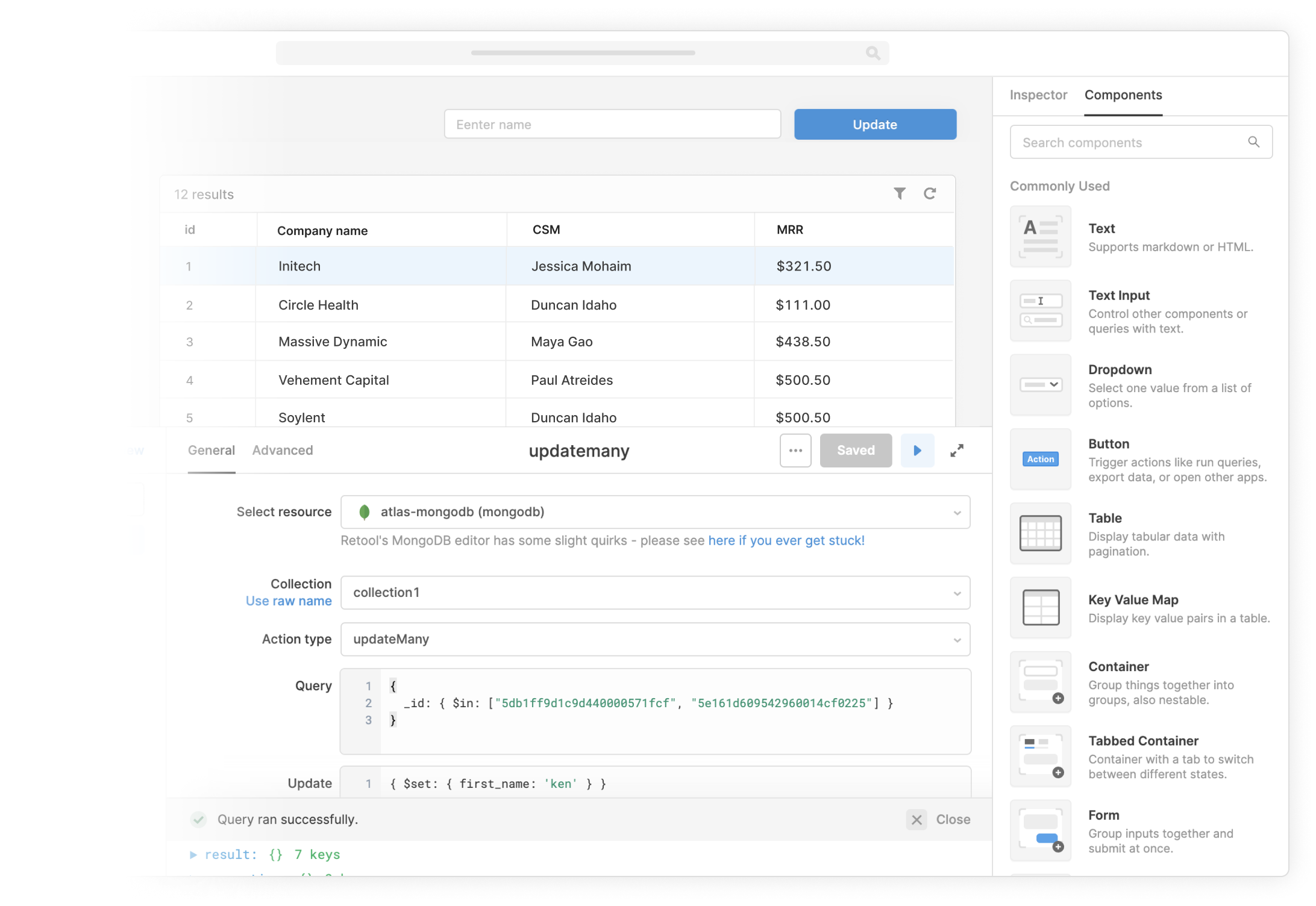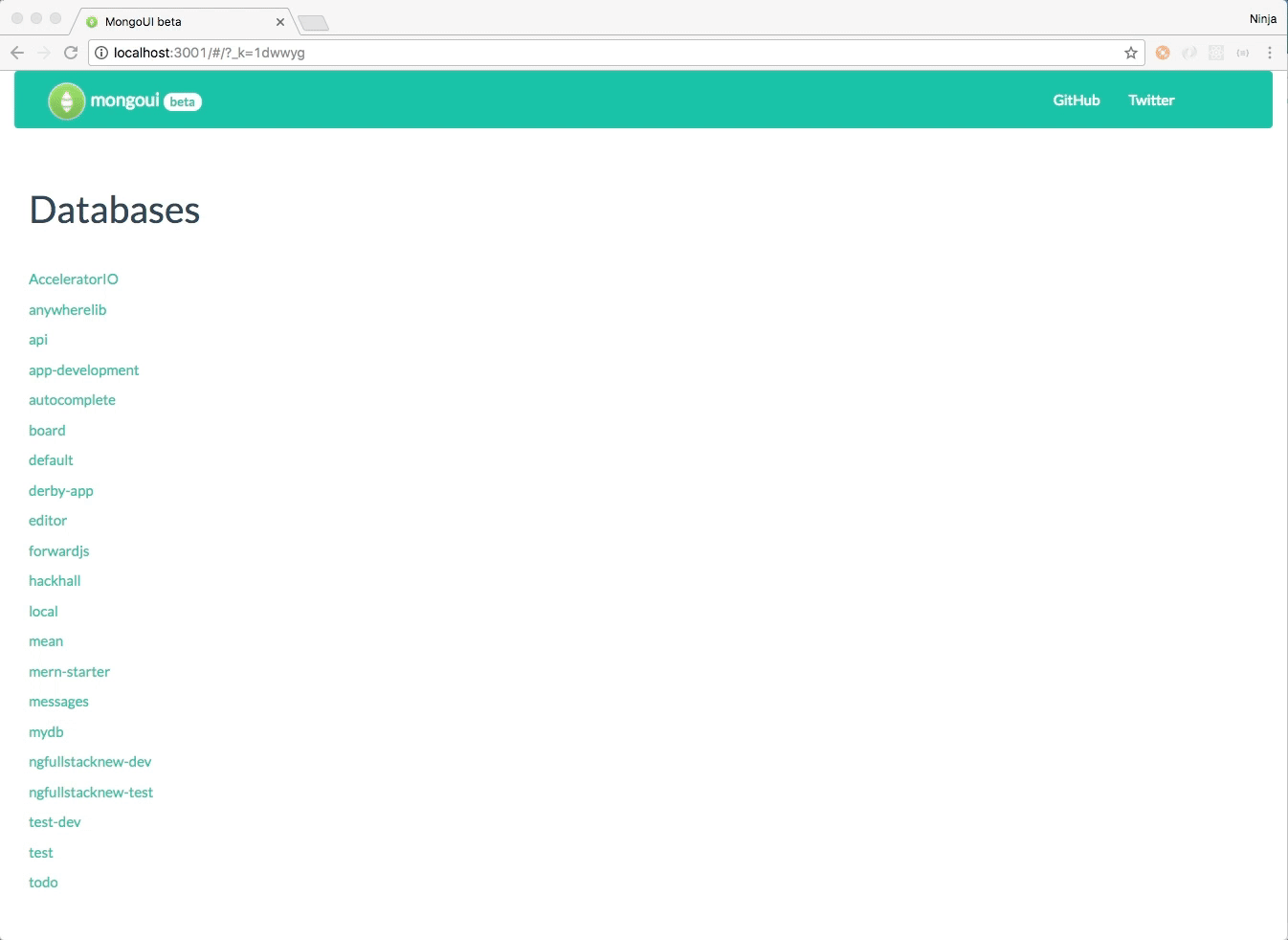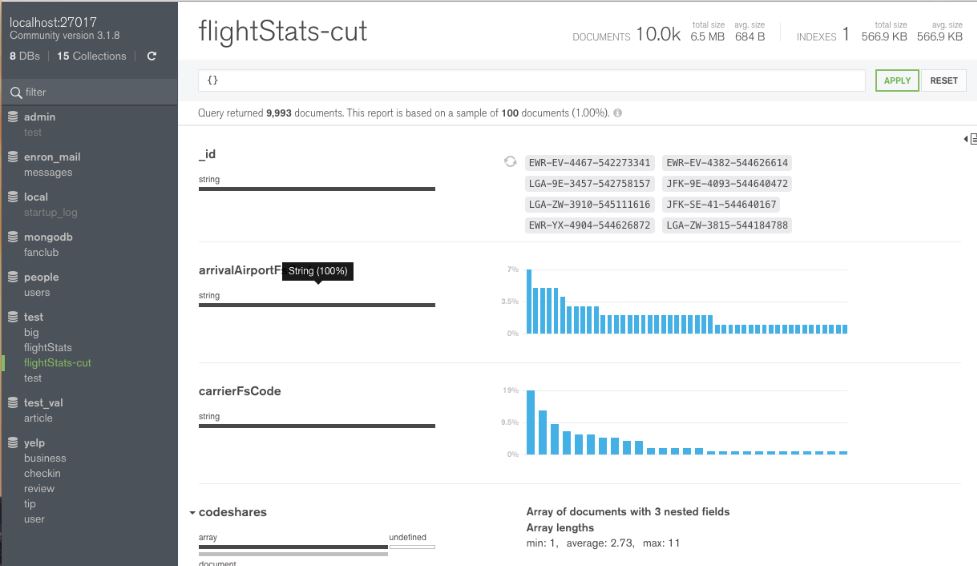

- #Mongo client gui for free#
- #Mongo client gui install#
- #Mongo client gui full#
- #Mongo client gui code#
You have created a database user for the deployed Atlas cluster, with rights to create, read and write to any database.


You have added your workstation's IP address to the Atlas Access List.Note before running the command above, ensure

Here is an example of how you can start the modern Shell to connect to an Atlas Free Tier MongoDB Cluster (change the text mongosh to mongo if you are using the legacy Shell): mongosh "mongodb+srv:///test" -username myuser Of the two Shell versions, is it is easier to use and view results with the modern Shell.
#Mongo client gui code#
However, you will find it straightforward to use one of the mentioned GUI tools instead to consume the code examples. All subsequent instructions in this book assume you are using the Shell. The book's examples present code in such a way to make it easy to copy and paste into MongoDB's Shell ( mongosh or mongo) to execute.
#Mongo client gui install#
Install the 3rd party 3T Software Labs provided graphical user interface (GUI) tool, Studio 3T provided graphical user interface (GUI) tool, MongoDB Compass Install the legacy version of MongoDB's command-line tool, the Mongo Shell: mongo (you will often find this binary bundled with a MongoDB database installation or you can download it from the Atlas console) Install the modern version of MongoDB's command-line tool, the MongoDB Shell: mongosh There are many options for the client tool, four of which are:
#Mongo client gui for free#
If you don't already have access to a MongoDB database, the two most accessible options for running a database for free are:
#Mongo client gui full#
You need to know the MongoDB URL for connecting to the database and, if authentication is enabled, the credentials required for full read and write access. You can run this deployment locally on your workstation or remotely on-prem or in the cloud. The database deployment for you to connect to can be a single server, a replica set or a sharded cluster. Some examples may work with minor alterations, and some may not work at all due to fundamental dependencies on features added in MongoDB versions after 4.0. For MongoDB versions 4.0 and earlier, some examples may work unchanged. Where this is the case, the exact version number required is called out. Some example pipelines use aggregation features that MongoDB introduced in versions greater than 4.2. Note that each example aggregation pipeline shown in the second major part of this book is marked with the minimum version of MongoDB that you must use to execute the provided pipeline. A MongoDB client tool running on your workstation with which to submit aggregation execution requests and to view the results.A MongoDB database, version 4.2 or greater, running somewhere which is network accessible from your workstation.Appendix: Stages Cheatsheet Sourceįor developing aggregation pipelines effectively, and also to try the examples in the second half of this book, you need the following two elements: Summarising Arrays For First, Last, Min, Max & Average Advanced Use Of Expressions For Array Processing Embrace Composability For Increased Productivity


 0 kommentar(er)
0 kommentar(er)
